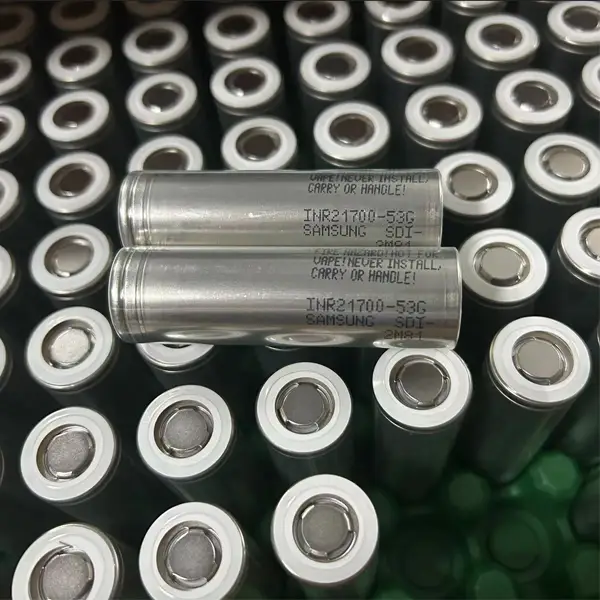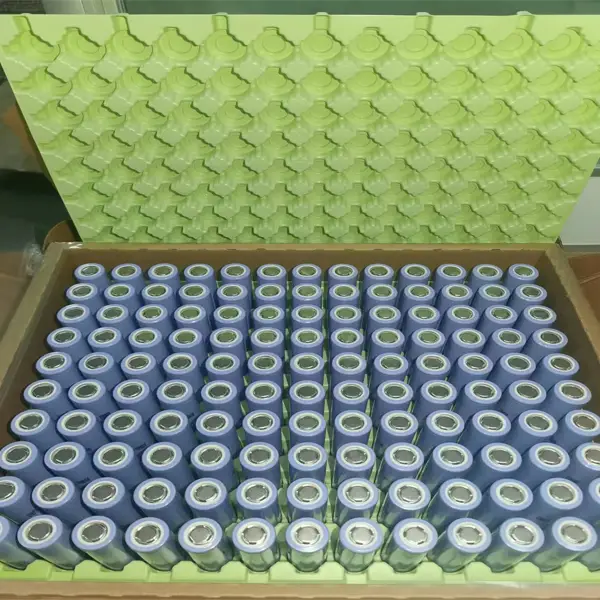Are you a DIY enthusiast looking for a 21700 battery cell? Well, that’s essential to choose the right one. Here is a guide to help you.
You need to select the right component for the best results for DIY projects. And among these components, batteries are the unsung hero. It is the battery that always provides life to your project. But the real question is, with so many batteries in the market, which is the best one? One popular choice for powering various devices is the 21700 battery cell. Currently, the cells are used in DIY gadgets, EVs, and home automation systems.
But the real question is choosing the suitable 21700 battery cell for your DIY projects. This expert article explores everything you need to know about 21700 battery cells.
What are 21700 Battery Cells?

Now comes the main question: what is a 21700 battery cell? It is a type of lithium-ion battery. It has gained popularity in the past few decades because of its enhanced performance. The battery offers outstanding capabilities compared to its predecessors, such as the 18650 battery. Have you ever wondered how the battery got its name? The name “21700” denotes its dimensions: 21mm in diameter and 70mm in length. And the size itself is ideal for several applications. You can use them in DIY projects, electric vehicles, home automation, and other power tools.
What Makes 21700 Lithium Ion Battery Popular for DIY Projects?
The different advantages of the 21700 lithium-ion battery make them popular. Here is the list of advantages why these batteries are best fit for DIY projects:
- The 21700 battery cell offers excellent energy density, which allows it to support longer runtimes than other batteries.
- Further, the 21700 batteries are easily accessible. Thus, everyone can get them whenever they want. These batteries are available in many electronic stores and online retailers. The best part is that even DIY enthusiasts can source them for their projects.
- Last is safety. Modern 21700 lithium-ion batteries have built-in safety features. Thus, you need not worry about overcharge protection and thermal management systems. Even for DIY projects, there is no risk of battery failures and hazards.
How to Choose the Best 21700 Battery Cell For Your Project?
Now comes the main section, how to choose the right 21700 li-ion battery. Well, some different factors and considerations will help you choose.
Analyze Your Needs
Before choosing the battery, first check your needs. For example, check the combined voltage you need for the project. Also, check the capacity you need to support your project. What are the discharge rate and performance demands? This will help you determine whether you need high bursts of power or if it can work even with a lower discharge rate.
Consider the Battery Chemistry
Generally, the 21700 cells contain lithium-ion. However, there are variations in a few batteries, such as lithium iron phosphate (LiFePO4) etc.
The chemical composition helps you determine the best battery for your project. The chemistry optimizes performance and longevity. Here is how you can decide the best battery based on chemical composition:
- Lithium Cobalt Oxide (LCO)
It offers high energy density but typically has a shorter cycle life.
- Lithium Manganese Oxide (LMO)
It provides good thermal stability and safety but has a lower capacity than other chemistries.
- Lithium Iron Phosphate (LiFePO4)
Perfect for projects that demand high cycle life and safety. But, the limitation is that it has lower energy density.
Check Different Brands

Before you select a cell for your DIY project, read about different brands available in the market. Always trust a reliable brand that offers you the best features and performance. You can also read battery reviews on the internet. Checking reviews will help you learn the performance of different cells. Also, double-check the customer support system of the brand you are selecting. Ensure the terms and conditions related to the battery warranty. Read about the technical specifications of the batteries. You can also check the brand’s safety certification.
Check the Compatibility of Batteries
Before finalizing your choice of 21700 rechargeable battery, ensure its compatibility. Check if the battery functions seamlessly with your project components. For example, choose a rechargeable battery if your project requires charging capacity. If you need more space in your project, choose a slim and sleek battery design. Further, environmental factors should be considered as well. If you work in high temperatures, choose batteries that can withstand them. Look for batteries with built-in protection against overcharge, over-discharge, and short-circuiting.
Consider the Cost Factor
It is equally important to consider the cost factors of the batteries. If you opt for expensive batteries, the overall expense of the DIY project might increase. And if you choose cheap batteries, they might only work well in some conditions. Thus, you have to replace them again and again. The only solution is to choose a blend of both. Research deeply and select the brand that offers quality and affordability.
Role of Key Characteristics of 21700 Battery Cell in DIY Projects
Now that you know how to choose the best cells. Let’s understand the key characteristics of a 21700 battery cell. At the same time, we have mentioned the role of that property in deciding if you need them for your project:
Capacity
The general capacity of a 21700 li-ion battery ranges from 3000mAh to 5000mAh. If your project requires longer runtimes, choose a higher-capacity battery. For easy projects, you can opt for a low-capacity battery.
Resistance
Another feature that determines the battery characteristics is resistance. If your project requires a constant flow of current during the project, choose batteries that offer lower resistance.
Voltage Rate
The voltage rate of 21700 cells varies from model to model. In general, most 21700 lithium-ion batteries have a nominal voltage of around 3.6V to 3.7V. This voltage range is suitable for almost all kinds of DIY projects.
Discharge Rate
If you don’t know, discharge rates show how the battery can release its stored energy. If your DIY projects have electric motors or need bursts of power, opt for a higher discharge rate. You should choose batteries with a high discharge rate for almost every project. As it releases the stored energy rapidly, allowing the components to work efficiently.
Pulse Discharge Rating (PDR)
Often considered as discharge rate, PDR is the short burst of current a cell can handle. You need to choose batteries with high pulse discharge rates. It will support the project with high-power demands.
Cycle Life
While selecting a 21700 lithium battery for your project, choose batteries with good cycle life. If you don’t know, cycle life is the number of discharge and charge cycles it can perform. It will help you overcome every crisis during the project.
How to Maintain 21700 Battery Cells?

Have you decided to choose the battery cells for your DIY projects? The next comes the maintenance of battery cells. Here are the tips that will help you to take care of the battery cells:
- If you are using a 21700 rechargeable battery, choose a quality charger. You should opt for one that prevents overcharging.
- Always store your project in a cool and dry place. Exposure to extreme temperatures might affect the battery’s performance.
- Check the connections and conditions of your project. If you ever find any electrical component swelled or leaked, take precautions.
- Further, cycle your batteries once every few months to maintain the conditions.
- Use a BMS system if you use more than one cell in your project. It will help you ensure the safety and security of the cells.
Conclusion
What are you still waiting for? Build your project with confidence using the best 21700 battery cell. The impressive energy density, versatility, and safety features make the cell popular. The above guide might have helped you to understand the essential requirements. Before selecting a battery, it is important to go through considerations. Remember, safety is paramount. Always research proper handling procedures for lithium-ion batteries and consult resources. Beforehand, consider the requirements of your DIY projects as well. Ensure that the battery cells align with your specific needs.
